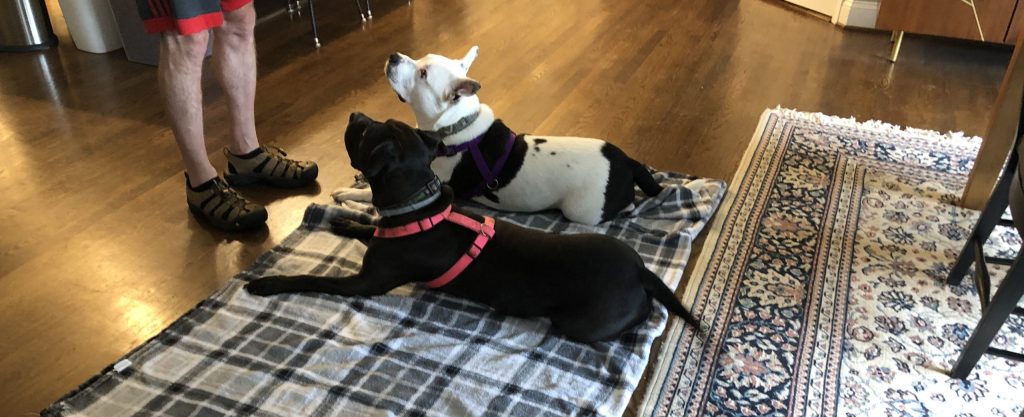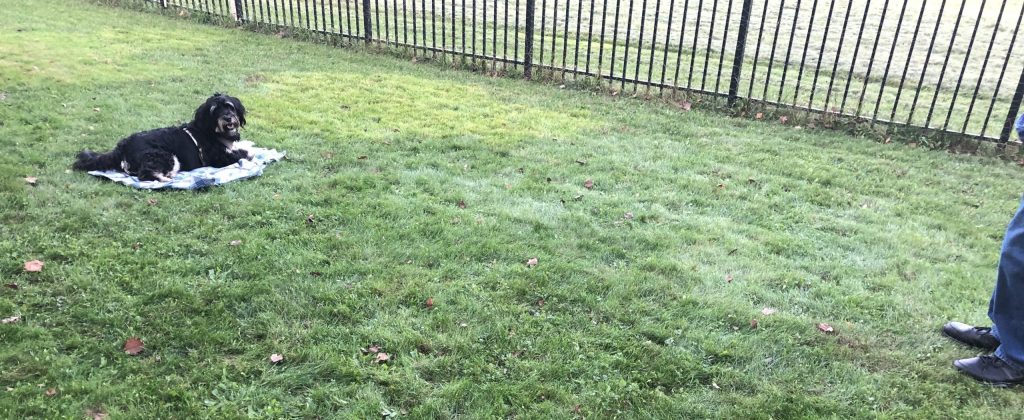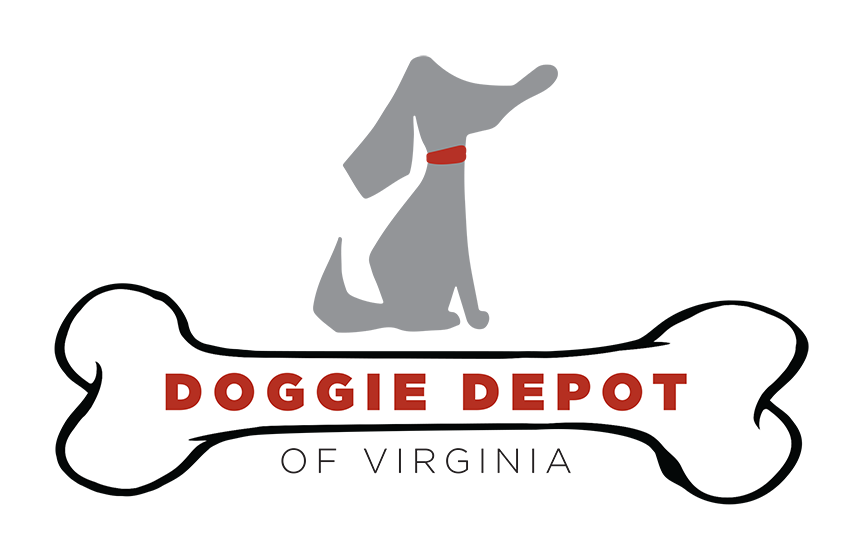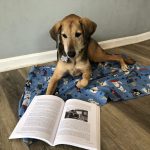Let your know dog it’s okay to relax
Have you ever heard the phrase “a tired dog is a good dog?” That phrase is both true and false. When dogs become overtired and overstimulated, cortisol levels build and their brains have trouble shutting off. This is often seen by dogs pacing, jumping and mouthing onto people. Think of it as the toddler who is overdue for their nap, and starts to throw a temper tantrum because they are overtired. They are full of emotion, but don’t know how to express it, and are too tired to communicate it appropriately. As owners, we need to teach them it’s okay to relax, and how to be calm. This is especially important if your dog struggles around certain stimuli, such as other dogs, cats, squirrels, visitors or any other trigger. We will first start with teaching your dog “Place” or to lay on a target, such as a blanket or towel.

Getting Started
You will need a blanket, towel, bathmat, or crate liner, but you’ll want to use something that is easy to move and walk around. Puffy and elevated beds can be cumbersome and hard to clean. You’ll want to be able to use your dog’s “place” anywhere in the house, outdoors, and be able to transport it easily. Many people have multiple “places” once their dog has gotten the hang of laying on the target. A crate liner is a starting point for dogs who tend to chew on blankets or still try to play with them when laying on the blanket. You will also need a pocket or training bag full of kibble or small training treats.
You’ll be using shaping and possibly some luring for this exercise. While easier if your dog already knows “sit” and “down”, we won’t actually use verbal cues to start. Walk up to the blanket. When your dog steps on it, even if it’s just one paw, reward. When they add more paws, reward. If your dog sits next to you and not on the blanket, walk across the blanket and turn around so you are standing on the edge and facing the blanket. Your dog should now come to you and stand on the blanket. Go ahead and reward. They will try to figure out how to get more treats, so will offer more behaviors. When your dog sits, reward. When they lay down, give them a jackpot reward of three to five treats. If they don’t sit or lay down within five to ten seconds, go ahead and release them, by using a cue such as “Let’s go”, “come”, or “free”. Be sure to reward them for leaving the target upon releasing them! The release cue is the most important piece of your dog staying on the target. Otherwise, they will wander off anytime they choose.
Adding the Cue “Place”
Repeat going to the blanket at least five times. Each time, reward for stepping on the blanket. Your dog may sit or lay down before you have a chance to reward them for even stepping on the blanket. Great! They are learning the end behavior. Once your dog is heading to the blanket and laying down, you can add the “place” cue. As you are walking over to the blanket, say the cue “place” and point to the blanket. When your dog lays down, give three to five treats. Don’t forget to release them each time! Be sure to practice this at least 10 to 15 times in different parts of your home.
Increasing Criteria
When your dog is reliably laying down and staying on the “place” until you release them, you can start stepping away from them. Start with one to three steps. Then increase to five to ten steps. When you can step away from your dog and they stay on “place”, you can then add duration by counting first to five, then ten, then 15. Add difficulty by moving around your dog, changing locations such as parks and coffee shops, and inviting visitors over.
What’s next?
Reward for their good behaviors. When they do something you like, reward them! This includes when they are relaxing by your feet when you are watching television or making dinner. Be sure to be consistent and don’t punish them if they do something you don’t like, such as jumping on visitors. Instead, have them do something else you want, such as sitting for greetings or laying on their “place”. We’ll address greeting visitors in our next segment.

As always, reach out to us or another qualified force-free trainer if you would like help teaching your dog calming behaviors or if you would like a consultation for any other reason.
Laura Schleef is the Owner and Head Trainer at the Doggie Depot of Virginia. When not training or playing with other people’s dogs, you can find her snuggling with her Border Collie mix Rocky, keeping her German Shepherd/Beagle cross Gidget from trying to eat all of Rocky’s treats and training her new Austrian Shepherd Fancy to not pick up Rocky and Gidget’s bad habits. She has been training dogs in multiple capacities for over 15 years and finally quit her “day job” in 2016 to pursue her passion full-time. In addition to shadowing other trainers, Laura has received certifications through Karen Pryor and Dr. Ian Dunbar force-free training programs.


